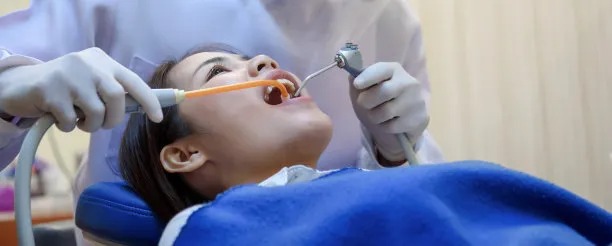Exploring Global Dental Tourism Top Destinations for Budget-friendly Oral Care Services
original:health91192025-02-21 14:17:06
Summary: Exploring global dental tourism reveals a burgeoning industry where patients journey across borders for affordable, high-quality oral care services. From cost savings to accessing advanced tr
Summary: Exploring global dental tourism reveals a burgeoning industry where patients journey across borders for affordable, high-quality oral care services. From cost savings to accessing advanced treatments, this sector offers diverse perks to cost-conscious consumers. This article delves into the top destinations for budget-friendly dental care, unveils reasons behind the rising popularity of this global phenomenon, offers practical advice on making informed choices, and surveys the potential impacts and considerations for individuals and the industry at large. Discover how dental tourism blends travel and treatment to craft smiles without breaking the bank.
Why Dental Tourism Thrives

The allure of dental tourism is rooted in the substantial cost disparities found in dental care around the world. In developed countries, particularly in the United States and Europe, dental procedures can be prohibitively expensive, leading many to seek alternatives abroad. With the cost of travel decreasing, and information more accessible than ever, international dental care is no longer reserved for the few.
In addition to price incentives, dental tourism thrives due to the high standard of care available in several countries. Many dental professionals abroad have trained or been accredited by reputable institutions in the US and Europe, ensuring that quality is not compromised for cost. Furthermore, the competition within the dental tourism market has intensified the focus on patient experience and satisfaction.
Another factor contributing to the growth of dental tourism is the advent of package deals that merge dental care with leisure activities. These packages not only streamline the entire experience but often include luxurious accommodations and tourism activities, making the concept of traveling for dental work more appealing.
Top Dental Destinations
Countries like Thailand, Mexico, and Hungary have emerged as top destinations for dental tourists. Each of these countries offers a unique combination of state-of-the-art facilities, skilled practitioners, and the appeal of a vacation spot. For example, Thailand is known for its serene beaches and vibrant culture, alongside world-renowned dental services at competitive prices.
Mexico, particularly areas close to the US border like Tijuana and Cancun, provides convenient access to Americans looking to curtail their dental expenditure. These Mexican cities have witnessed a surge in high-quality dental clinics catering specifically to foreign clients. Hungary, deemed the dental capital of Europe, offers both advanced procedures and a chance to explore the historic charm of old Europe at a fraction of the cost.
Other notable destinations gaining traction in dental tourism include Costa Rica, India, and the Philippines. Each of these locales presents a unique proposition in terms of cost, quality, and tourism opportunities, enabling patients to make a selection that suits their specific needs and interests.
Choosing Wisely: Tips and Advice
Embarking on dental tourism requires diligent planning and research. Prospective patients should thoroughly vet dental facilities, scrutinizing accreditation, patient reviews, and the credentials of the dental professionals. Resources such as international dental association websites and forums can offer insights into reputable clinics.
It is also vital for patients to communicate directly with the chosen clinic to discuss their needs and the logistics involved. Understanding the potential for follow-up care, warranty policies on dental work, and the steps taken in case of complications are critical considerations that should be addressed prior to booking.
Additional considerations include the legal aspects of receiving medical care in a foreign country, such as the recourse available in the unlikely event of malpractice. Patients should also factor in travel insurance that covers medical procedures, to protect themselves from unforeseen costs.
Impact and Considerations
The rise of dental tourism has numerous implications, both for the patients partaking in it and the global dental industry. For patients, the cost-benefit analysis overwhelmingly favors seeking dental services abroad, but it also introduces elements of risk and requires a balancing of potential pros and cons.
On an industry level, the popularity of dental tourism could nudge local providers to reassess their pricing structures and service offerings. It might also encourage a more globally integrated approach to healthcare standards, bridging the gap between nations in terms of quality and affordability. Meanwhile, destinations famous for dental tourism continue to improve their infrastructure to accommodate the growing influx of health-conscious travelers.

Summary:
In conclusion, global dental tourism has become an attractive option for those seeking high-quality, affordable oral care services away from home. By considering cost, quality, convenience, and the overall patient experience, individuals can unlock significant savings while enjoying a unique travel experience. The booming popularity of this industry is shaping not just consumer choices but also the way dental care is perceived and delivered worldwide.
As you contemplate the best destination for your dental needs, remember that knowledge and due diligence are your best travel companions in this journey to a healthier smile and a happier wallet.
This article is published by HEALTH9119 Medical Health Network https://www.health9199.com arrangement